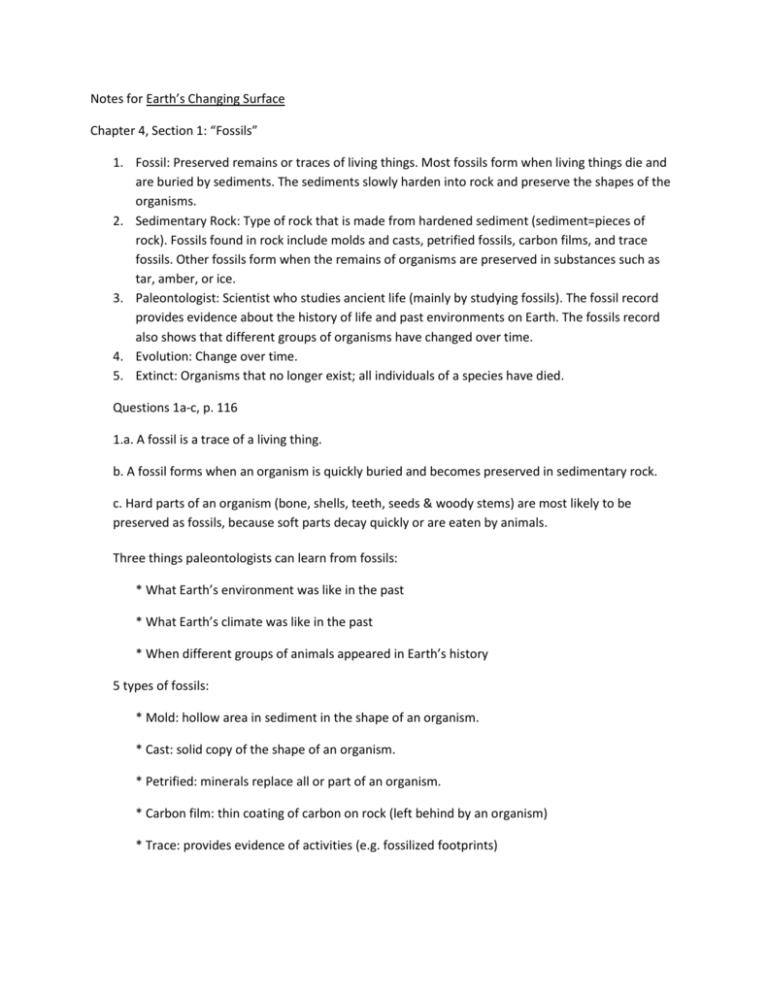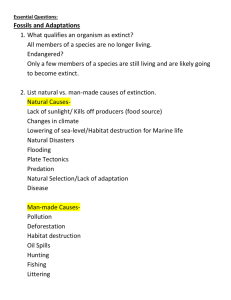Fossils: Notes on Formation, Types, and Paleontology
advertisement

Notes for Earth’s Changing Surface Chapter 4, Section 1: “Fossils” 1. Fossil: Preserved remains or traces of living things. Most fossils form when living things die and are buried by sediments. The sediments slowly harden into rock and preserve the shapes of the organisms. 2. Sedimentary Rock: Type of rock that is made from hardened sediment (sediment=pieces of rock). Fossils found in rock include molds and casts, petrified fossils, carbon films, and trace fossils. Other fossils form when the remains of organisms are preserved in substances such as tar, amber, or ice. 3. Paleontologist: Scientist who studies ancient life (mainly by studying fossils). The fossil record provides evidence about the history of life and past environments on Earth. The fossils record also shows that different groups of organisms have changed over time. 4. Evolution: Change over time. 5. Extinct: Organisms that no longer exist; all individuals of a species have died. Questions 1a-c, p. 116 1.a. A fossil is a trace of a living thing. b. A fossil forms when an organism is quickly buried and becomes preserved in sedimentary rock. c. Hard parts of an organism (bone, shells, teeth, seeds & woody stems) are most likely to be preserved as fossils, because soft parts decay quickly or are eaten by animals. Three things paleontologists can learn from fossils: * What Earth’s environment was like in the past * What Earth’s climate was like in the past * When different groups of animals appeared in Earth’s history 5 types of fossils: * Mold: hollow area in sediment in the shape of an organism. * Cast: solid copy of the shape of an organism. * Petrified: minerals replace all or part of an organism. * Carbon film: thin coating of carbon on rock (left behind by an organism) * Trace: provides evidence of activities (e.g. fossilized footprints)
![F3-4 Study Guide for QUIZ [1/28/2016]](http://s3.studylib.net/store/data/006814899_1-56a576b1a51c0f876f28a8da0f15de89-300x300.png)










